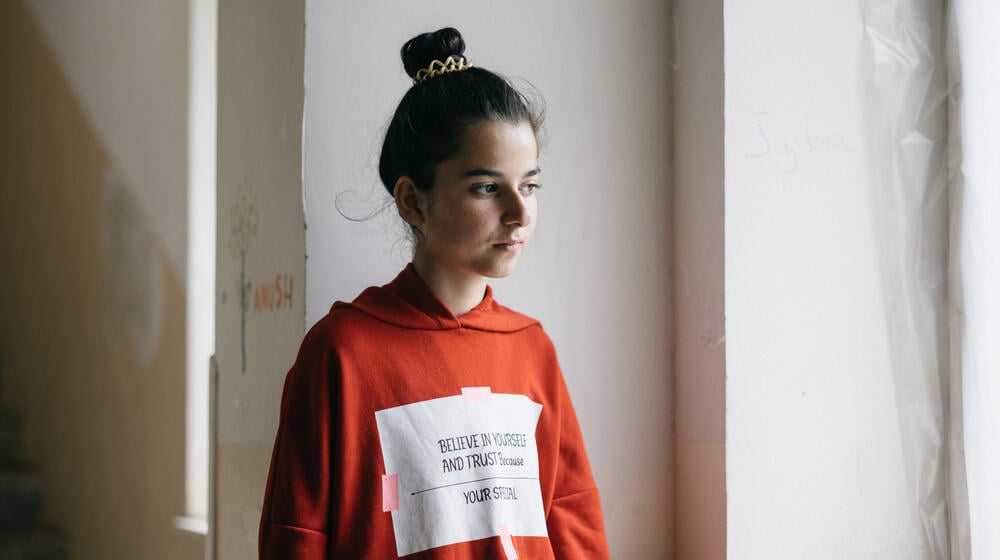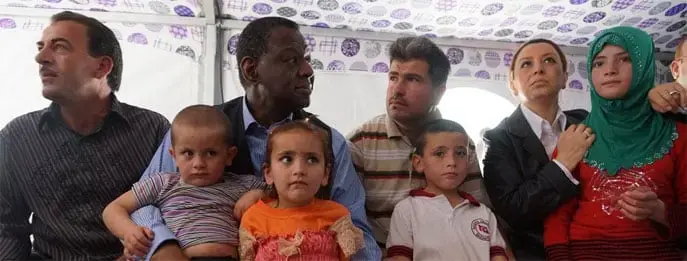VAYOTS DZOR, Armenia – “I didn’t even know whether my parents were alive or not. It was a very difficult time,” said Mariam, a 16-year-old from Martakert in Karabakh.
Mariam was whisked out of school on 19 September with her classmates when bombing began in the region that has been at the heart of a decades-long territorial conflict between Armenia and Azerbaijan.
At a shelter in the regional capital, Mariam tried to contact her parents, but cell service was down. Three days later, they arrived with others from Mariam’s village, some having traveled the 50 kilometres (31 miles) from Martakert on foot due to fuel shortages.
It took another three days to cross the border into Armenia. Speaking to UNFPA at a camp-dormitory in Vayots Dzor, she said: “I miss my home”.
Mariam is among the more than 100,000 people – primarily ethnic Armenians – to have fled into Armenia following the escalation of hostilities on 19-20 September. About one third of the refugees are reportedly under 18, and approximately half are women and girls.
Their needs are different to those of men and boys in an emergency. But they often go unmet.
Access to essential care disrupted
When disasters strike, their fallout frequently affects women and girls most acutely.
Conflict and displacement heighten the risk a woman will face gender-based violence, and an estimated 60 per cent of preventable maternal deaths happen in places afflicted by political conflict, displacement and natural disasters.
Among the tens of thousands of women and girls that have fled into Armenia, more than 2,000 are believed to be pregnant – with nearly 700 births expected in the coming three months.
Crises risk access to the materials mothers need to survive and thrive through pregnancy and childbirth. To address this issue, UNFPA is providing health facilities across three regions of Armenia with reproductive health kits containing sufficient sexual and reproductive health supplies to cover the needs of a population of 150,000.
The agency has also trained 35 local service providers on specialized care for survivors of gender-based violence. Two safe spaces where women and girls can access psychosocial support, health care and legal services are already up and running; three more are in the works.
“UNFPA [has been] in the field since day one responding to the arrival of the more than 100,000 people,” said Emmanuel Roussier, Humanitarian Coordinator for UNFPA’s Emergency Response in Armenia in an interview. “We work with all our partners in the field to make sure we can provide safe spaces for women and girls where they can share their stories and receive the services they need.”
A brighter future for girls
At the camp-dormitory in Vayots Dzor, Mariam wears a sweatshirt that says: “Believe in yourself and trust because [you’re] special”.
Mariam is one of 600 million adolescent girls living on the planet today, who – according to a recent survey by the Partnership for Maternal, Newborn and Child Health – dream of a future in which they can learn and grow in a safe and supportive environment.
“Every girl is born with boundless potential – to learn and thrive, to lead, inspire and change the world,” said UNFPA Executive Director Dr. Natalia Kanem in a statement for the International Day of the Girl Child. “We must however act faster and more boldly so that every girl, wherever she is, grows up safe in the knowledge that her body is her own and her future hers to chart, that she is able to go to school, access the health care she needs, and live free from violence.”
Before Mariam’s family fled their hometown, the 16-year-old loved attending an educational centre in Martakert and practicing photography, making animations and creating online games.
It’s unclear when she’ll be able to resume these studies – just as it’s uncertain, according to UN officials, whether many of Karabakh’s former inhabitants will choose to return.
Unfortunately, for Mariam’s family, there is no home to return to. “I was told that our house was bombed like many others in my village,” she said. “I didn’t take anything as I was taken to the shelter from school. I couldn’t even say goodbye.”





